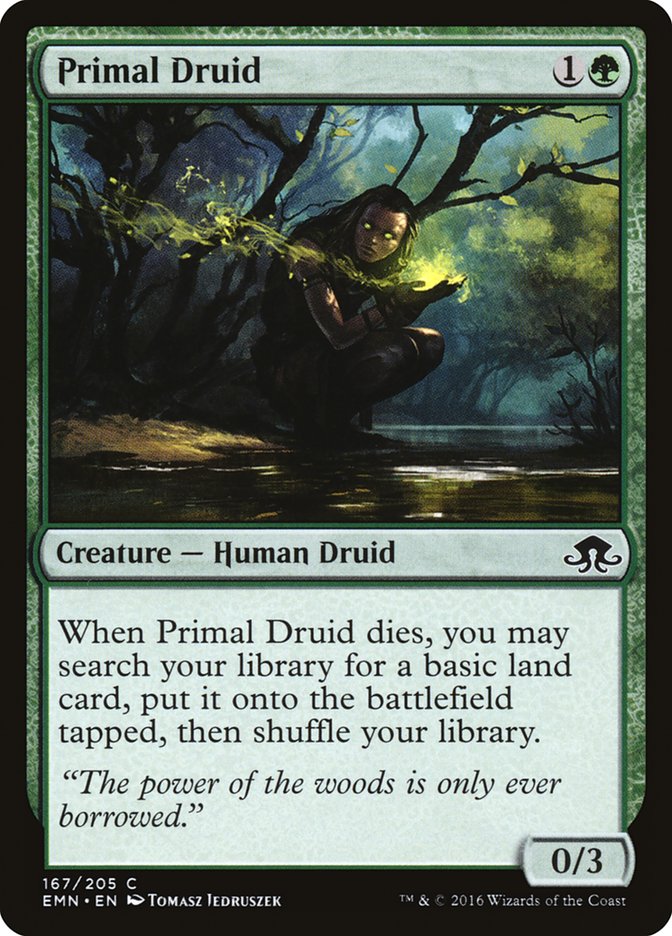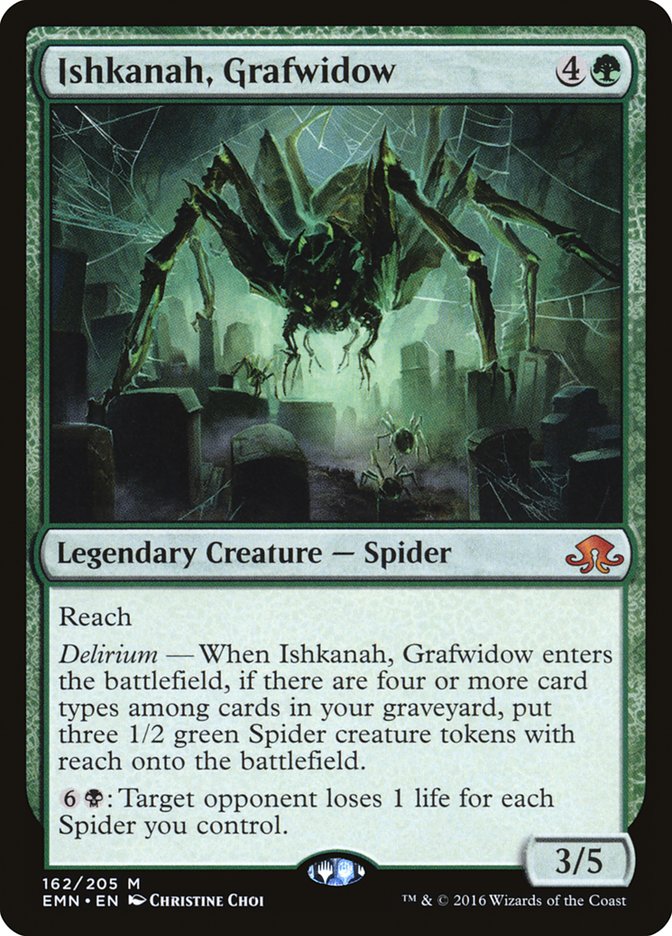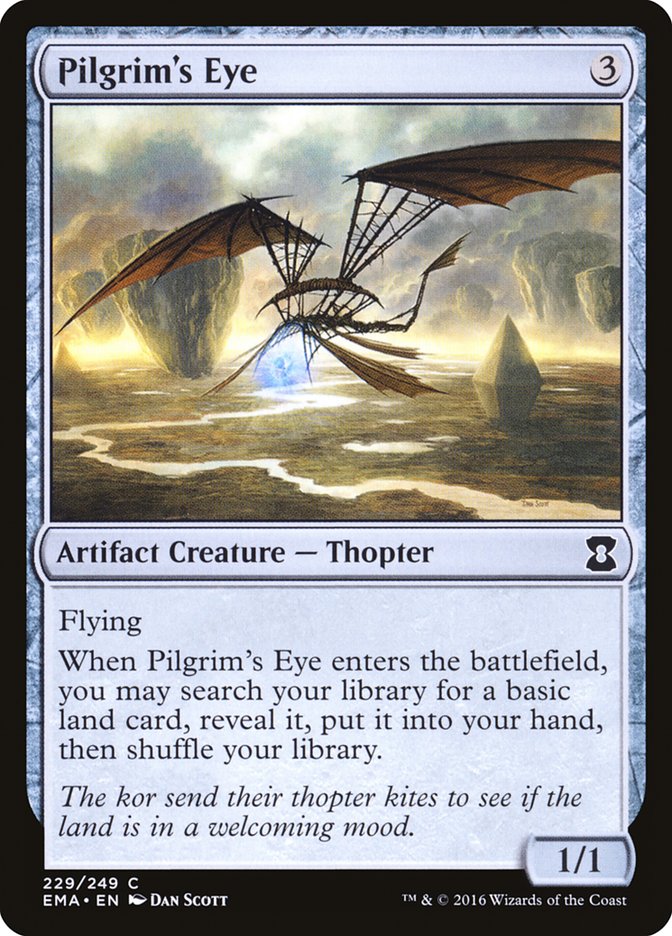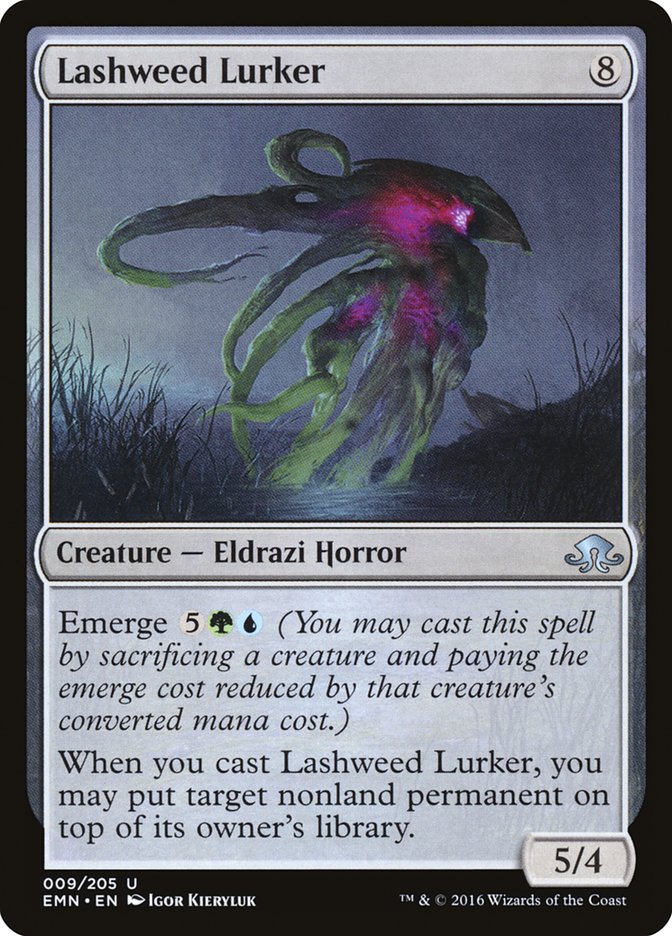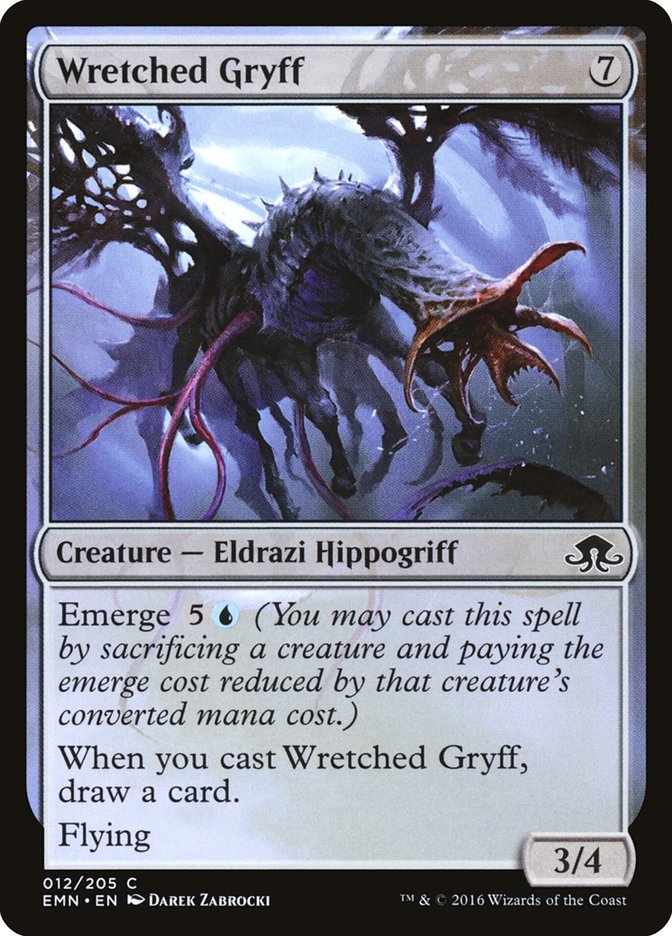While the Pro Tour itself went poorly for me, I can take some satisifcation in the end result knowing that I was cognizant of what was going on in the format and the range of strategies that various teams brought to the event. For the most part, we always had a copy of Temur Emerge that I was constantly trying to improve before #PTEMN. Before we get to that, though, let’s take a look at where we started:
Creatures (25)
- 1 Pilgrim's Eye
- 4 Jace, Vryn's Prodigy
- 4 Matter Reshaper
- 4 Wretched Gryff
- 3 Elder Deep-Fiend
- 1 Lashweed Lurker
- 4 Primal Druid
- 4 Foul Emissary
Lands (25)
Spells (10)

The biggest problems with U/R Emerge in the beginning were the power level of the enablers and the increased tension to constantly be moving “all in.” Cards like Eldrazi Skyspawner in particular added very little value to the deck other than being the correct mana cost. This sacrifice in power level, coupled with an extreme vulnerability to Liliana, the Last Hope, made it so the deck was simply fine.
Further, U/R Emerge was often forced to play out like an aggressive tempo deck that leveraged Elder Deep-Fiend chains to race an opponent. It’s not like this wasn’t powerful, but rather it made the deck too reliant on sacrificing Sanctum of Ugin quickly to accrue a critical mass of emerge creatures. As a result the deck was vulnerable to removal and running out of steam.
My theory was that Primal Druid could fix all of those issues.
Primal Druid is a good blocker that is actively incentivized to die while not being vulnerable to Liliana. In fact, drawing Primal Druids would actually enable Emerge to naturally ramp into eventually hard-casting all of its monsters. In essence, it was the perfect card and I built this deck as a pushed “proof of concept” to maximize all the synergies. Wretched Gryff in particular is excellent in a deck like this, as it can be emerged easily off of Primal Druid to give Temur a huge rush of resources and a body that fights well against all of Bant Company’s creatures and Spell Queller.
I also didn’t realize initially how good Grapple with the Past and Gather the Pack were, but they have of course at this stage made their presence known in Standard by being featured in a plethora of other decks, some of which aren’t even interested in emerging! They are ridiculously powerful, with the former essentially becoming a Demonic Tutor later in the game when it gives you access to your full graveyard.
Of course, the two green cards are excellent for incidentally milling Kozilek’s Return into your graveyard, but they also make Jace, Vryn’s Prodigy the best that it’s been in six months. We haven’t seen Jace transform with remarkable consistency on turn 3 in quite a while, and he is still an amazing card in a deck that can abuse him properly. Temur Emerge is that deck.
Eventually, it was clear that the deck was powerful but still misbuilt. Again, because the deck was built intially to see if it “worked,” there was a heavy stress on synergy, too much so. The deck was performing well against Bant Company, but there were still issues arising from not being able to get an enabler into combat for fearing of it dying and making your hand clunky, or simply running into a brick wall of Reflector Mages before the deck could get moving.
Simultaneously, Ishkanah, Grafwidow was making big waves in Team Eureka testing and became one of the backbones of several of our strategies. The card is excellent at brick-walling an opponent’s offense and buying a bunch of time. That said, it is still critical to be able to properly utilize that time due to the presence of Archangel Avacyn, Tireless Tracker, and Duskwatch Recruiter, but getting a two-turn window or so of repreieve is typically enough when you’re working towards Emrakul, the Promised End.
I won’t stress too hard how many hoops were jumped through to get to this point, but here is the deck that three members of the team played to a 22-8 finish (if you discount me screwing it all up).
Creatures (22)
- 4 Pilgrim's Eye
- 4 Jace, Vryn's Prodigy
- 1 Emrakul, the Promised End
- 1 Wretched Gryff
- 4 Elder Deep-Fiend
- 3 Ishkanah, Grafwidow
- 1 Lashweed Lurker
- 4 Primal Druid
Lands (24)
Spells (14)

The end result is a bit of an amalgam between the two Top 8 competitors’ decklists: Andrew Brown’s more synergy-pushed aggression and Owen Turtenwald’s Emrakul-reliant combo deck.
So why build the deck this way? A reasonable answer is going to be “because supporting Emrakul even in a small capacity is very powerful.” The “weirdest” card here is certainly Pilgrim’s Eye, but it is critical to how the deck is constructed. Yes, it does die to Liliana, the Last Hope and that is unfortunate, but it also seamlessly makes the deck extremely stable as long as it does not die to the aformentioned. Providing two card types for delirum and incidentally making Emrakul, the Promised End cost eight mana makes it so that drawing Gather or Grapple in combination with Pilgrim’s Eye (or milling it) makes enabling turn 5 Ishkanah with delirium remarkably trivial.
Additionally, it allows for Traverse the Ulvenwald without having to move towards slower cards like Vessel of Nassency. Of course, Traverse is also absurd with Jace, Vryn’s Prodigy. This combination of cards in the deck more-or-less gives Temur Emerge a very powerful and consistent end-game of turtling up before hammering an opponent with Emrakul and friends. Further, it is still possible to simply tempo an opponent out in a sea of Elder Deep-Fiends.
Removing Matter Reshaper is certainly the most controversial choice and even now it is difficult for me to defend it as totally correct. Matter Reshaper is likely the best pure enabler simply for its ability to get into combat, but it does make the manabase worse (or at least more stressed) and overall I don’t think that it solves many of Temur Emerge’s issues other than giving it another fine body to “goldfish” more consistently with turn 4 Deep-Fiends.
Again, because of a shift from being a super-aggressive engine deck to a fluid archetype that can shift roles between playing aggressively and going bigger, it is difficult to justify playing Matter Reshaper when the deck is already so stressed on slots. Essentially, Pilgrim’s Eye is too important and I’d rather be playing another two-drop, especially one that doesn’t stress my colors.
Why the split on Lashweed Lurker and Wretched Gryff? There’s no special answer to this question. Lashweed Lurker is important in any matchup involving planeswalkers and Angels, but it is a weak emerge card pound-for-pound on rate. Wretched Gryff is simply cheap and excellent in combination with Primal Druid. That said, it isn’t the focus of the deck anymore like in Andrew Brown’s version.
I’d like to think that the power level of the deck is here already, but it is possible that there was a sacrifice made in only choosing to play two Sanctum of Ugin between maindeck and sideboard. With the addition of Traverse the Ulvenwald, I favored the nod towards consistency, but it’s difficult to not consider other options when a similar archetype is choosing to play the full four copies main.
A quick sideboard guide:
Bant Company
On the play:
In:
Out:
On the draw:
In:
Out:
The truth of the matter is that Radiant Flames isn’t even that exciting in this matchup, but many of the small nods in construction were made towards Bant Company, including the overall shift towards becoming more “controlling” with Ishkanah and Emrakul. While it may seem appealing to sideboard out the Promised End, it is not advised. Having the ability to go over the top of Bant Company is too important. Radiant Flames can win games if an opponent curves out without Selfless Spirit; just don’t run it into Spell Queller.
G/W Tokens
In:
Out:
Another good matchup. Reality Smasher was something that we tried several times in this matchup, but it always seemed to fall short. Again, turtling up behind Ishkanah, Grafwidow and using Lashweed Lurker and Elder Deep-Fiend chains to pressure their planeswalkers before eventually getting too far ahead with Emrakul is a reliable and powerful gameplan. Patience is key here.
B/W Control
In:
Out:
This was a matchup we were concerned with going into the Pro Tour, and although we started to figure it out for the most part, B/W Control winning the tournament is still not likely a good thing for Temur Emerge moving forward. This matchup also illustrates well how difficult it can be to sideboard with Temur Emerge; taking a minimalistic approach is typically important, but with the removal of Ishkanah, there’s more room to dilute your engine.
Liliana, the Last Hope is a scary card on the draw, since it can be protected straight up to its ultimate and you are likely stressed to quickly find a Reality Smasher or Lashweed Lurker. Despite the fact that Kozilek’s Return appears poor on paper in this matchup, Kalitas, Traitor of Ghet is surprisingly annoying, and that’s completely ignoring the potential to run into any of the Angels package.
Temur Emerge Mirror
In:
Out:
Against a deck like Owen’s it is likely important to turn into the aggressor. Titan’s Presence is a powerful tool for removing yourself from an Elder Deep-Fiend soft lock, and largely you want to be tapping an opponent down before hammering them with a Reality Smasher. At that point you should be able to leverage your aggression to end the game. Eldrazi Obligator is another nice bullet that makes any kind of tutor or potentially recursion spell lethal after Emrakul, the Promised End.
Onward
It’s difficult to say how to improve this version of Temur Emerge specifically. In terms of what it is capable of doing, notably being flexible as an aggressor or defender while having a powerful (but perhaps not the most powerful) end-game, I think it is well-tuned. This middle ground in particular is very powerful against the likes of Bant Company and G/W tokens, while having the ability to get to Emrakul against other powerful delirium strategies.
I do think that flexibility is valuable, as we saw Andrew Brown succumb to Sam Pardee by getting grinded out, while Owen was quickly beaten up by B/W Control. Regardless, though, we are still in the infancy of this Standard format and these emerge decks are not easy to play or build. I suspect we will be seeing a great deal of innovation now that the world knows exactly how powerful the tools we have to play with are.


